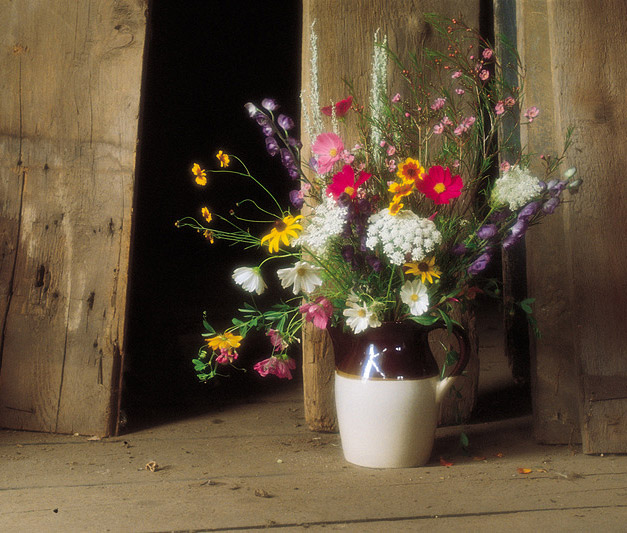Gardens
Displaying Flowers in Classic Containers
When you arrange flowers, it’s critical to place them in containers that will showcase the blooms–not detract from their beauty. Back at the turn of the 20th century, Gertrude Jekyll was a respected authority on home decor, and her expertise on vases still holds true today. If you don’t own any (or enough) formal vases, […]

 When you arrange flowers, it’s critical to place them in containers that will showcase the blooms–not detract from their beauty. Back at the turn of the 20th century, Gertrude Jekyll was a respected authority on home decor, and her expertise on vases still holds true today. If you don’t own any (or enough) formal vases, follow these guidelines for displaying flowers in classic containers that won’t sacrifice appearances, recommended by Miss Jekyll in Flower Decoration in the House (1907).
No pattern preferred.
“As a rule it is well to avoid things that have much pattern, the chief exception to this being jars of oriental blue and white porcelain, which are singularly becoming to many kinds of flowers.”
Set them in silver.
Silver bowls, cups, and beakers are always excellent choices for displaying cut flowers, especially on dining tables. “They look best on well polished dark mahogany, as in the days of our forefathers.”
Serve them like soup.
Search for castoff serving dishes, particularly salad bowls and soup tureens, at flea markets and in the attic, “They will generally be admirable for flowers, both cut and in pots.”
Don’t shrink from finger bowls.
Another kitchen castoff you can pick up: heavy glass finger bowls, which are excellent for violets.
A pint for peonies.
If you have a pewter mug or commemorative beer stein hanging around in a cupboard, adopt it for displaying heavy-headed flowers, such as peonies or irises. “Such flowers might easily overbalance anything whose centre of gravity was not as well assured.”
Don’t toot the trumpet.
Although trumpet-shaped vases are popular, they’re often not the best choice, because they’re prone to tipping and don’t provide much volume for water at the base, where it’s most needed.
When you arrange flowers, it’s critical to place them in containers that will showcase the blooms–not detract from their beauty. Back at the turn of the 20th century, Gertrude Jekyll was a respected authority on home decor, and her expertise on vases still holds true today. If you don’t own any (or enough) formal vases, follow these guidelines for displaying flowers in classic containers that won’t sacrifice appearances, recommended by Miss Jekyll in Flower Decoration in the House (1907).
No pattern preferred.
“As a rule it is well to avoid things that have much pattern, the chief exception to this being jars of oriental blue and white porcelain, which are singularly becoming to many kinds of flowers.”
Set them in silver.
Silver bowls, cups, and beakers are always excellent choices for displaying cut flowers, especially on dining tables. “They look best on well polished dark mahogany, as in the days of our forefathers.”
Serve them like soup.
Search for castoff serving dishes, particularly salad bowls and soup tureens, at flea markets and in the attic, “They will generally be admirable for flowers, both cut and in pots.”
Don’t shrink from finger bowls.
Another kitchen castoff you can pick up: heavy glass finger bowls, which are excellent for violets.
A pint for peonies.
If you have a pewter mug or commemorative beer stein hanging around in a cupboard, adopt it for displaying heavy-headed flowers, such as peonies or irises. “Such flowers might easily overbalance anything whose centre of gravity was not as well assured.”
Don’t toot the trumpet.
Although trumpet-shaped vases are popular, they’re often not the best choice, because they’re prone to tipping and don’t provide much volume for water at the base, where it’s most needed.

Photo Credit : Publishing, Skyhorse


